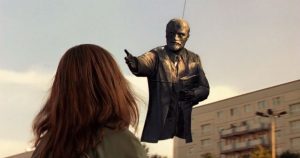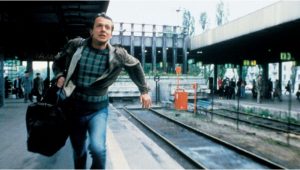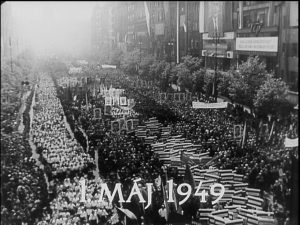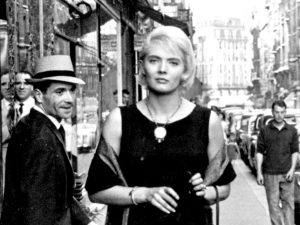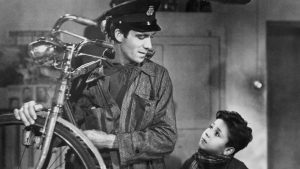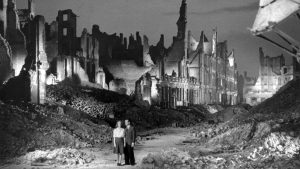Roberto Rossellini’s Rome, Open City (1945) opens like a thriller — soldiers in the street, a man hunt, tense music, a rooftop escape — and closes like a national fable — with children marching into the future to build a better Italy. In between we are served up a story of resistance and repression, of suffering and persistence (and suffering and persistence) in the face of an oppressive German occupation. The plot is driven by a series of character studies: Pina, who comes across as a force of nature; the reluctant resistance operator Don Pietro, who brings humor and humanity to the film; the compromised Marina, who plays the role of (im)moral exemplar; the Christ-like suffering of Manfredi, and many others. It is driven by powerful scenes: the shooting of Pina, the seduction of Marina, the torture of Manfredi, the execution of Don Pietro, and more. And it centers on a number of themes: resistance and betrayal, women’s roles, father figures, moral decisions. Any one of these characters or scenes or themes could be the subject of its own essay.
Italy, as I told you in class, has a complicated history when it comes to the Second World War. Italy was the birthplace of the fascist movement, and Mussolini was an ally of Hitler in the effort to dominate Europe and the world. By the time of the “open city” of Rome, in 1943 and 1944, Italy was occupied by the German Army which faced an Allied invasion from the south. For the most part, the moral valences of the characters come in black and white, good and bad, but there are Italians on the bad side (such as the police chief), Axis soldiers on the good side (such as the Austrian deserter). Nonetheless, this is a film about resistance, a film that seems aimed to redeem Italy from the stain of fascism.
We could write another comment centering on the roles of women in the film. Pina stands as a powerful maternal figure. She slaps Marcello around a bit, and pulls on his ear, but everything tells us that this is what a good mother in Italy in 1943 should be doing. That she is unmarried and pregnant gets a bit of notice (from Pina herself), but doesn’t seem a problem in the world of the film. Her sister, Lauretta, and her friend, Marina, are another story altogether. Somehow or another they’ve gone bad (in the world of the film) working in a café, entertaining German soldiers, and giving themselves over for the promise of drugs and goods. Rossellini was playing on old images, the contrast of the holy mother figure and the degraded prostitute and turning them to the moral purpose of a restored Italy.
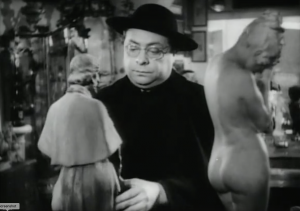
Another kind of commentary could direct our eye to the mise-en-scene (or the art design). For the most part, the settings of the film are simple and bare. In the background of Pina’s apartment we see a map of Italy. On the wall of Major Berman’s office there is a map of Rome. There are moments of strange, almost expressionist shadows on the wall, as in the shot of Don Pietro at his desk. In one scene, the setting and the props stand out as something different. In the first part of the film, having accepted the assignment to help Manfredi and the resistance, the Priest Don Pietro enters an antiques shop cluttered with statues and furniture and asks to see Francesco (Pina’s fiancé). What follows is a funny little moment as Don Pietro looks at the statue of San Rocco looking in the direction of a statue of a naked woman. The priest shows his embarrassment and turns the statues away from each other to protect the eyes of San Rocco. Have some modesty, he seems to say. It’s a funny moment that relieves the tension of the partisan mission that Don Pietro has taken on. But it also seems to resonate with the story of the film. Here is an old Italy of statues and trinkets, expressed through the setting of the antiques shop. The new Italy is behind a door and down the stairs; it is the Italy of the partisans who are organizing resistance to the German occupiers. It says something important, on the part of Rossellini, that the Catholic priest and the Communist partisans will work together.
Somehow old and new will have to work together to rebuild Italy. And so, in the last image, we see the children marching together as the dome of Saint Peter’s rises behind them. They are off to rebuild Italy on more solid ground.

